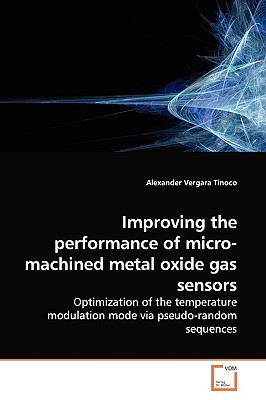
- We will send in 10–14 business days.
- Author: Alexander Vergara Tinoco
- Publisher: VDM Verlag
- ISBN-10: 3639140184
- ISBN-13: 9783639140187
- Format: 15.2 x 22.9 x 1.5 cm, softcover
- Language: English
- SAVE -10% with code: EXTRA
Improving the performance of micro-machined metal oxide gas sensors (e-book) (used book) | bookbook.eu
Reviews
Description
One of the major problems in gas sensing systems that use metal oxide devices is the lack of selectivity. In order to tackle these troubles experienced with such sensors, different strategies have been developed in parallel. Modulating the working temperature of metal oxide gas sensors has been one of the most used methods to enhance sensor selectivity. Although the good results reported, until now, the selection of the frequencies used to modulate the working temperature remained an empirical process. This book describes a systematic method to determine which are the optimal temperature modulation frequencies to solve a given gas analysis problem. The method, borrowed from the field of system identification, has been developed and introduced for the first time in the area of gas sensors. It consists of studying the sensor response to gases when the operating temperature is modulated via maximum-length pseudo-random sequences. Such signals share some properties with white noise and, therefore, can be of help to estimate the linear response of a system with non-linearities (e.g., the impulse response of a sensor-gas system).
EXTRA 10 % discount with code: EXTRA
The promotion ends in 16d.12:10:14
The discount code is valid when purchasing from 10 €. Discounts do not stack.
- Author: Alexander Vergara Tinoco
- Publisher: VDM Verlag
- ISBN-10: 3639140184
- ISBN-13: 9783639140187
- Format: 15.2 x 22.9 x 1.5 cm, softcover
- Language: English English
One of the major problems in gas sensing systems that use metal oxide devices is the lack of selectivity. In order to tackle these troubles experienced with such sensors, different strategies have been developed in parallel. Modulating the working temperature of metal oxide gas sensors has been one of the most used methods to enhance sensor selectivity. Although the good results reported, until now, the selection of the frequencies used to modulate the working temperature remained an empirical process. This book describes a systematic method to determine which are the optimal temperature modulation frequencies to solve a given gas analysis problem. The method, borrowed from the field of system identification, has been developed and introduced for the first time in the area of gas sensors. It consists of studying the sensor response to gases when the operating temperature is modulated via maximum-length pseudo-random sequences. Such signals share some properties with white noise and, therefore, can be of help to estimate the linear response of a system with non-linearities (e.g., the impulse response of a sensor-gas system).


Reviews